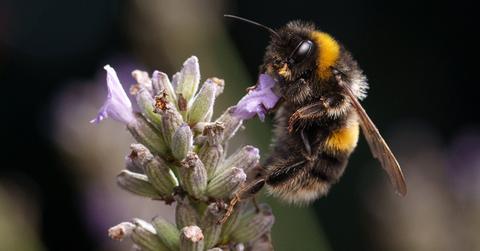Before You Try Mad Honey, You Should Probably Learn What You're Getting Into
Published April 14 2023, 2:01 p.m. ET

Anyone who grew up watching Winnie the Pooh and his friends likely knows that honey, as sweet as it is, is mostly harmless. It's sticky, sure, but it's also an ideal sweetener for a wide variety of different foods and drinks.
Of course, there are a number of different varietals that introduce different flavors, but most of them are totally fine to eat. Mad honey, which is made from plants containing grayanotoxins, is an exception to that general rule. So, what does mad honey do to you? Keep reading to find out!
What does mad honey do to you?
Unlike regular honey, mad honey has both hallucinogenic and medicinal qualities. It is produced by bees that feed on specific species of rhododendron plants, which grow in mountainous regions, including those surrounding the Black Sea. The honey has been used for hundreds of years for a variety of different purposes, and while it's still in use today, it's illegal in some countries.

The honey is redder than most honeys and slightly bitter, but its psychotropic effects are what really set it apart. In lower doses, mad honey has been known to cause euphoria, light-headedness, and dizziness. Higher doses are more dangerous and can result in vomiting, hallucinations, loss of consciousness, seizures, and in some rare cases even death.
One account from Vice described the feeling as similar to what it feels like to smoke weed.
“I felt like my body was cooling down, starting from the back of my head and down through my torso," David Caprara wrote. "A deep, icy hot feeling settled in my stomach and lasted for several hours. The honey was delicious, and though a few of the hunters passed out from eating a bit too much, no one suffered from the projectile vomiting or explosive diarrhea I’d been warned about.”
David ate two teaspoons, which seems to be the recommended dosage.
Other accounts say that the sensations include a general tingling as well as a feeling of ease and mellowness. It seems that in these small doses, you can avoid most of the severe side effects, including vomiting and diarrhea. At this level, you also seem to avoid hallucinations, while experiencing a high that mostly affects your body instead.
The effects of mad honey come from the rhododendrons.
Mad honey is undoubtedly an unusual variety of honey, and it turns out that its unique qualities come from the type of flowers the bees who make it feed on. When bees feed primarily on rhododendrons, which contain neurotoxic compounds called grayanotoxins, they put those grayanotoxins into the honey they produce.
Mad honey can be hard to access in nature because it's typically found near rhododendrons, which grow at high altitudes. Bees often build their nests on the cliffsides, which naturally makes the honey harder to access. Now that mad honey has become more accessible to the masses, the most important thing is to eat it in small doses and avoid using it by yourself if possible.